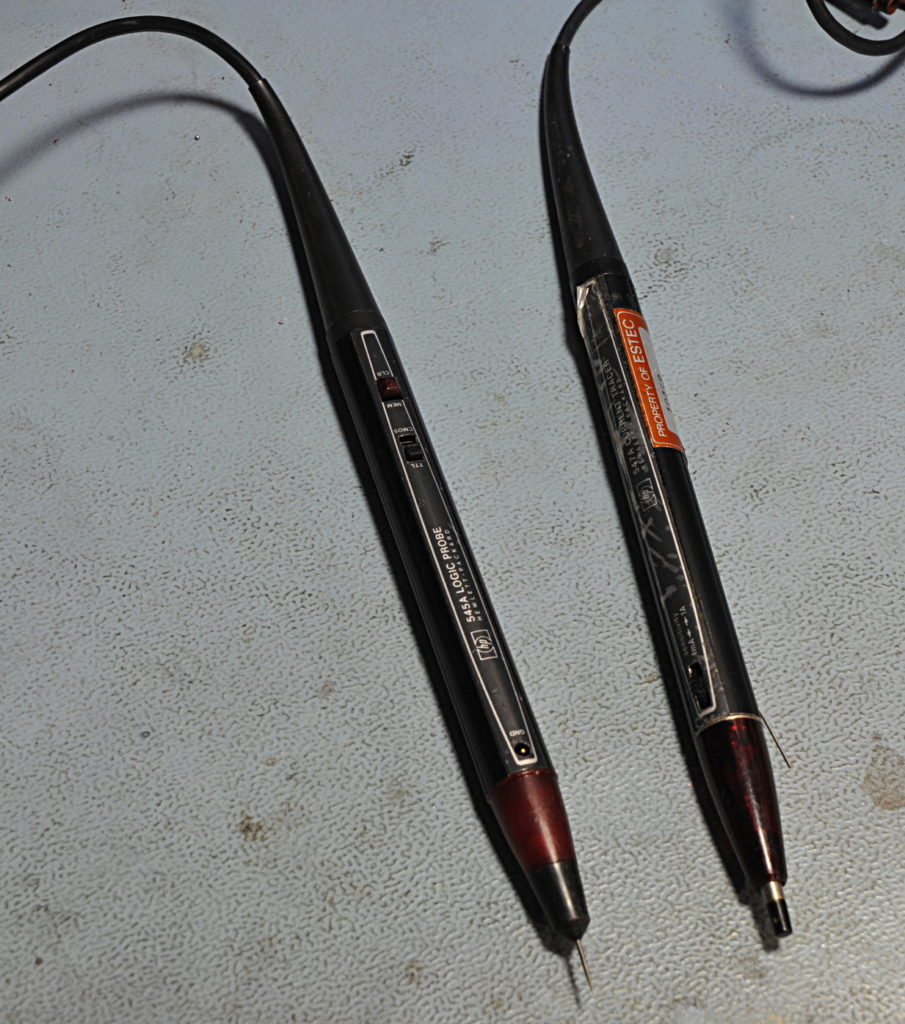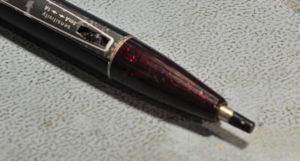This probe was a long time on my wishlist but they are a bit rare. On the picture together with the 545 logic probe. There is a third member from this family, the 546 logic pulser.
They are invented in the 70’s, the time when logic analysers where rare and very expensive complex instruments used by computer developers. The 54X probes family was made for the repair/service market.
The 545 logic probe is a nifty thing and still usable but replaced by the digital scope. It has a light in the tip that burns dim if a bus is high impedance, bright if the signal is a logical 1 and goes out when the line is a logical zero. If there is data or a clock it starts blinking (with a fixed visible frequency)
The 546 is a pulsing current source used to inject current in a circuit. I do not have one but build something like it. You can use it in situ f.i. to make the gate of an inverter high and then look with the 545 if the output goes low. Or supply current in a shorted trace and then follow it with the 547 to the short.
Besides that the 547 is a very usable non-contact current tracer. It is made to detect current steps. The brightness of the light indicates the change in current magnitude. You can set a reference level with the potentiometer above the tip. This way you can see the change in current with high resolution. It detects single pulses from 50ns wide. It can detect 1mA pulses. It is so sensitive I could follow the ripple current from a DC supply. A DC supply has a nice constant voltage but the current can go all over the place so measuring current through traces can tell you a lot. On the other hand, it will not detect a DC current source. That sounds a bit strange for a current probe but is logical. It detects only step-like changes in current.
It is a bit strange nobody makes something like this they are very handy for trouble shooting. You can see f.i. if a relais coil is exited, see pwm current into the gate of a mosfet, find shorted tantalums etc. TTi has its i-prober, I have one and use it often. That also does DC but starts around 5mA and you can not set a reference. To do that you need to put the power of the circuit, set the scope trace on a position and then see how much it moves. The 547A sees what is right under the tip with a surprisingly good resolution. Both are very very versatile only limited by the fantasy of the user .
All these HP probes are powered by the circuit through clipping it to some supply pins on the board you are working on. But you can power them from anything you like between 4,5 and 18Vdc.
There is a nice explanation of these probes in the december 1976 HP journal.

